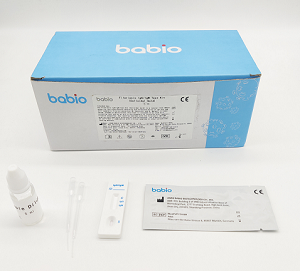Here's an overview of tropical disease rapid tests
2024-03-25
Tropical disease rapid tests are diagnostic tools used to detect infectious diseases that are prevalent in tropical regions. These tests are designed to provide quick and accurate results, often within minutes, enabling timely diagnosis and treatment of these diseases. Rapid tests are particularly valuable in areas with limited access to laboratory facilities and medical resources. Here's an overview of tropical disease rapid tests:
1. Diseases Detected: Tropical disease rapid tests can detect a wide range of infectious diseases commonly found in tropical and subtropical regions. These may include:
- Malaria: Rapid diagnostic tests (RDTs) for malaria detect the presence of malaria parasites in blood samples.
- Dengue fever: Rapid tests for dengue fever detect specific antibodies or antigens associated with the dengue virus.
- Zika virus: Rapid tests for Zika virus detect Zika virus RNA or antibodies in blood or urine samples.
- Chikungunya: Rapid tests for chikungunya detect specific antibodies against the chikungunya virus.
- Leptospirosis: Rapid tests for leptospirosis detect antibodies against Leptospira bacteria in blood or urine samples.
- Typhoid fever: Rapid tests for typhoid fever detect antibodies or antigens of Salmonella typhi bacteria in blood samples.
- HIV/AIDS: Rapid tests for HIV/AIDS detect HIV antibodies or antigens in blood or oral fluid samples.
- Other tropical diseases: Rapid tests may also be available for diseases such as dengue fever, yellow fever, filariasis, schistosomiasis, and more.
2. Principle of Operation: Tropical disease rapid tests typically use immunochromatographic assay techniques, lateral flow immunoassays, or nucleic acid amplification methods to detect specific markers of the target pathogen in patient samples. These tests often utilize monoclonal antibodies or molecular probes that bind to the target antigen or nucleic acid sequence, producing a visible signal (e.g., color change) to indicate a positive result.
3. Sample Collection: Samples for rapid testing may include whole blood, serum, plasma, urine, or other body fluids, depending on the specific test requirements. Some rapid tests may also be designed for use with fingerstick blood samples, allowing for easy sample collection in resource-limited settings.
4. Ease of Use: Tropical disease rapid tests are designed for ease of use, requiring minimal training to perform. They typically come in the form of test cassettes, dipsticks, or cartridges that contain all necessary reagents for the test. The user simply adds the sample to the test device and waits for the results to appear.
5. Interpretation of Results: Rapid test results are interpreted visually based on the appearance of a test line or color change in the test device. Most tests include a control line to verify proper test performance. Positive, negative, and invalid results are typically indicated on the test device.
6. Benefits and Limitations: Tropical disease rapid tests offer several advantages, including rapid results, portability, ease of use, and suitability for point-of-care testing in remote or resource-limited settings. However, they may have limitations in terms of sensitivity, specificity, and the need for confirmatory testing in some cases.
7. Regulatory Approval: Rapid tests for tropical diseases should meet regulatory standards for diagnostic accuracy, safety, and quality control. Regulatory authorities may require validation studies to demonstrate the performance characteristics of the tests before they can be approved for clinical use.
In summary, tropical disease rapid tests are valuable tools for the rapid and accurate diagnosis of infectious diseases in tropical regions, enabling timely treatment and control measures to mitigate the impact of these diseases on public health.



